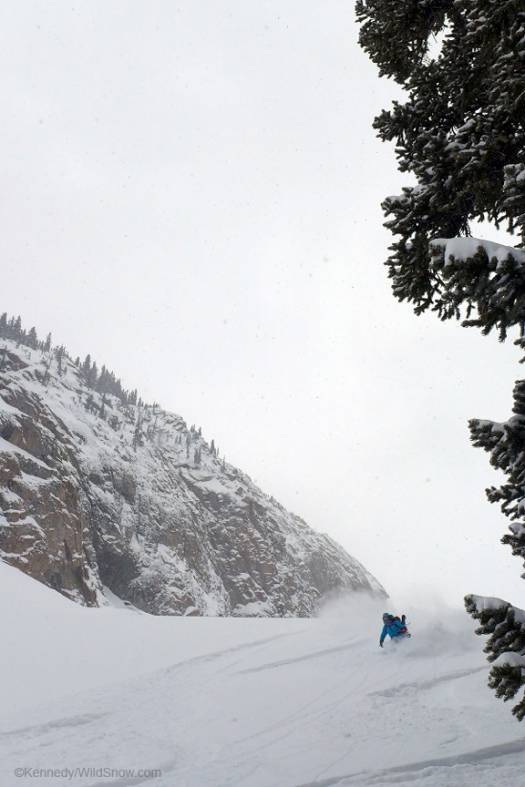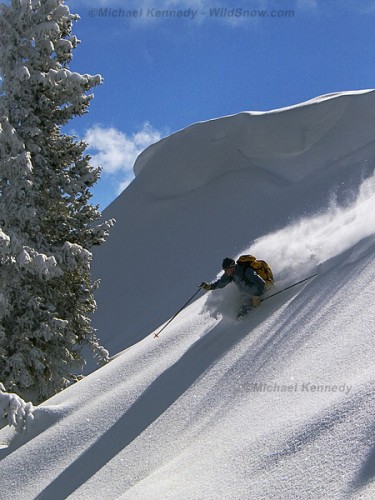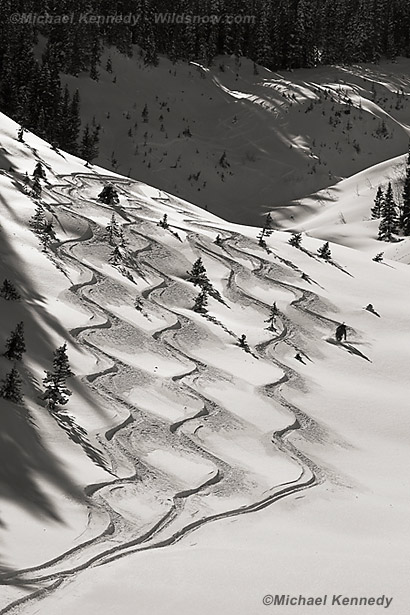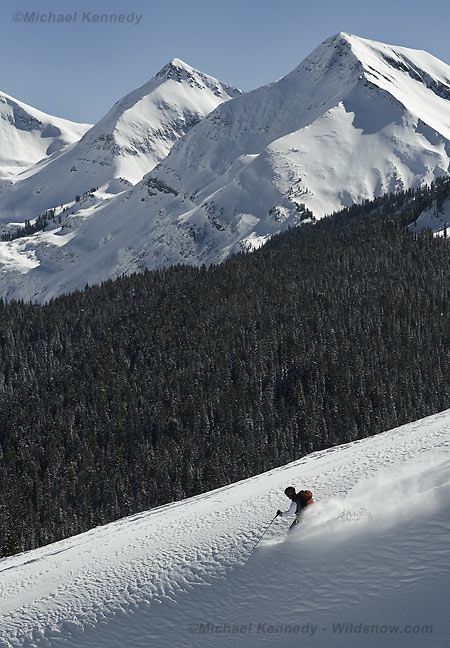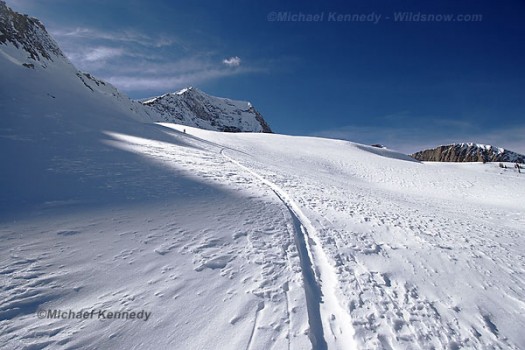Michael Kennedy
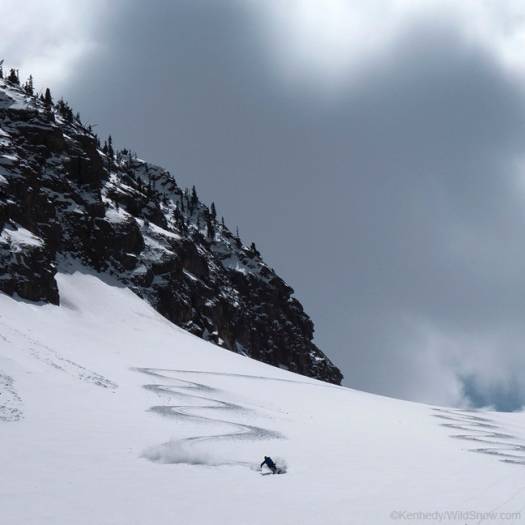
Mark Zitelli, McClure Pass backcountry, April 2014. Panasonic Lumix LX7. Here at WildSnow.com we enjoy the more subtle toned “storm shots” along with the hyper-real style of photography. Both types of images are represented here, thanks to Michael. Click all images for higher quality or larger versions.
Editor’s note. One of my favorite people in the “old guard” crowd is Michael Kennedy: former owner and publisher of Climbing Magazine, prolific alpinist and backcountry skier. Michael is also an accomplished photographer who’s been published thousands of times. We’ve kept this post running over the years, updated every so often to keep pace with the rapidly changing world of photography. I recently asked Michael for an update on what he’s using for cameras:
Lou,
I’ve used the Canon G series cameras quite a bit since I went digital, and now use the Panasonic Lumix LX7 for my smaller camera. I really like the accessory Panasonic electronic viewfinder; expensive and bulky but it’s easier to compose and frame the shot and allows me to use the camera in bright sunlight. The Lumix LX7 isn’t the smallest or lightest pocket camera but it has very good image quality and provides all the control you need for backcountry skiing photos. I carry my smaller cameras in a belt pack so they’re easy to get to, always a key thing.
For a digital SLR, I use the Canon Rebel T1i. The image quality is very good, reasonably fast motor drive, cleaner and bigger image files than the pocket cameras.
For most backcountry skiing use I carry a single lens, the Canon 17-85 zoom (28-135 equivalent); I’ve also got the Canon 10-22 zoom (16-35 equivalent) and will carry that when I’m feeling ambitious, photography-wise. I’ve got a couple other lenses that I use closer to home (fast primes) but the zooms are the way to go most of the time.
I use a Lowe topload-type of case with a chest harness for the Rebel. Super accessible so you can whip the camera out when you need to. I’ve experimented with using the case on a pack belt, but for skiing I find it interferes with my leg movement too much. This is a real individual thing so you need to figure out what works for you.
The most important thing is to have the camera instantly accessible when backcountry skiing—when it’s in the pack on your back you lose too many shots.
The downside of digital is the learning curve and time for post-processing—to really get the most out of your files you have to dive deep into Photoshop. I shoot everything in RAW—that’s a whole other topic.
My one most important tip: Shoot no matter what – good light, bad light, stormy days and clear days. I’m amazed sometimes when I get something really good in bad weather or terrible conditions. (More WildSnow.com photography information and tips.)
See Ya, MK
Beyond our regular guest bloggers who have their own profiles, some of our one-timers end up being categorized under this generic profile. Once they do a few posts, we build a category. In any case, we sure appreciate ALL the WildSnow guest bloggers!

